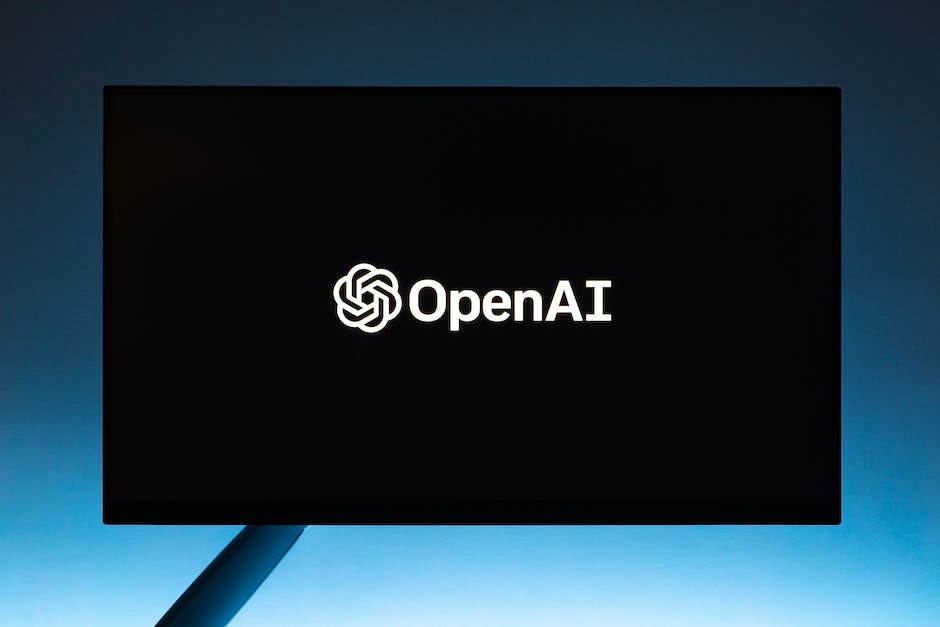In an era where technology evolves constantly and significantly influences myriad industries, it is crucial for businesses to stay abreast of recent developments and harness them effectively. One such breakthrough in the field of Artificial Intelligence is GPT-3 that promises to revolutionize the way online businesses operate. This intriguing technology, with its human-like text generation capabilities, is breaking barriers in natural language processing, opening up a realm of opportunities. From generating innovative content and automating customer service to aiding in market analytics and SEO optimization, GPT-3 stands to offer immense value. However, along with these fascinating possibilities, there are also certain challenges and ethical considerations that companies need to be aware of.
Understanding GPT-3 and AI
The GPT-3 Revolution: A New Era in Artificial Intelligence
OpenAI’s latest marvel, the GPT-3 (Generative Pretrained Transformer 3), is rapidly transforming the Artificial Intelligence (AI) arena, pushing the boundaries of what machines can comprehend and generate. This AI model, boasting an extraordinary 175 billion machine-learning parameters, is making a significant buzz in the tech fraternity for its high-level accuracy and human-like fluency.
Arriving as the third installment of the GPT series, GPT-3 surpasses its predecessors in terms of size and complexity. However, what sets it apart is its self-learning capability. Leveraging a technique known as ‘unsupervised learning’, GPT-3, rather than relying on explicit human instructions, learns by analyzing vast data sets and deciphering patterns.
GPT-3 is changing the game in multiple sectors. It is incredibly powerful when it comes to natural language processing tasks. It can act as a chatbot, translate languages, write articles, answer emails, and even create poetry with human-like proficiency. Contrary to popular belief, GPT-3 is not just limited to text-based tasks. It provides surprising results in image processing and can offer astonishingly precise image descriptions. Twitch’s Artbreeder is a showpiece example of GPT-3’s prowess in this field.
One of GPT-3’s revolutionary features is its ability to generate Python code. In the development space, it can provide coders with shortcuts, predict code outcomes, and even plot graphical models based on code instructions. It eliminates tedious manual coding and accelerates the work process, making the coding sphere more efficient than ever.
In terms of usability, GPT-3 raises the bar high. Apart from its impeccable problem-solving skills, the easy interaction that GPT-3 offers is taking user experience to the next level. Whether simplifying customer interactions through customer support bots or acting as a personal secretary by managing calendars, GPT-3’s potential is unlimited.
Notwithstanding its supremacy, GPT-3 does have its limitations. It can generate biased or inappropriate responses, and lacks the ability to understand context. Also, it does not exhibit any form of consciousness or genuine understanding, contrary to some misconceptions. However, with continuous refinements and upgrades ahead, it is highly probable that future iterations will overcome these hurdles.
Undeniably, OpenAI’s GPT-3 is a giant leap forward in unleashing the full potential of AI. By automating complex tasks, it affords humans the luxury of time for more creative, analytical pursuits while offering streamlined experiences across manifold sectors. With GPT-3, AI is not just changing the way things work; it is redefining the future of automated intelligence. It’s an exciting time, and every tech enthusiast will be on the edge of their seats, keenly watching where this technology roller coaster takes them next.

Photo by onderortel on Unsplash
GPT-3 for Content Generation
A revolution is headed towards online businesses, led by GPT-3, the third iteration of OpenAI’s Generative Pretrained Transformer. This machine learning model acts not just as a boon for natural language processing tasks and image descriptions but also as a phenomenal aid in the creation of content for online businesses.
In the realm of content creation, GPT-3 has the potential to drastically transform the way we operate. It can churn out content that’s far more copious, higher in quality, and built at a level of efficiency that would take a human team months to mirror.
For businesses both big and small, time is an invaluable asset. The ability of GPT-3 to streamline the content creation process can be a game-changer. With it, the generation of marketing copy, blog posts, product descriptions, or even responses to customer inquiries can now be done at a pace and proficiency hitherto unseen.
Now, consider the power of personalization. GPT-3’s advanced contextual capabilities enable it to tailor content per the audience’s specifics. Certain preferences, cultural nuances, language styles can all be fed into GPT-3, enabling bespoke content creation moulded aptly for the targeted demographic.
SEO strategists have often struggled with the balance between optimizing content for search engines while keeping it engaging for humans. GPT-3 can breathe fresh life into this struggle. With its learning capabilities, AI can be steered to compile content that resonates with both Google’s algorithms and human sensibilities, creating a win-win scenario for businesses.
Moreover, when integrated into websites, GPT-3 can easily serve as an interactive concierge, learning from customer interactions and feedback and working to improve the user experience by automated, personalized attention.
While concerns regarding lack of total human understanding and potential biases embedded in AI still linger, it’s important to remember that GPT-3 is still a tool at the end of the day – the quality it delivers depends upon the usage. Human supervision, ethical guidelines, and constant refinement can work to navigate these concerns effectively.
Wrapping it up, implementing GPT-3 in online businesses to transform the content creation process can be likened to harnessing a superpower. When utilized judiciously, it can redefine how we interact with technology, marking a new era of advanced automated intelligence and undeniably influencing the trajectory of AI’s future role in our society.
Imagine a world where technology and humans work together, augmenting each other’s capabilities, creating a synergy that drives ceaseless innovation. It’s not too distant a reality, and GPT-3 helps us inch closer to it, one byte at a time.

Automating Customer Service with GPT-3
Leveraging GPT-3 for Superior Online Customer Service Interactions
As technology continues propelling businesses at breakneck speed towards an artificial intelligence-centric future, GPT-3 occupies center stage. Essentially, GPT-3 is an AI tool with a knack for understanding, generating, and processing human language, bridging the gap between humans and machines. Among its multitude of applications, the ability to revamp online customer service and interaction is particularly fascinating.
Online customer support is an instrumental pillar of offering a seamless customer user experience. The impact of GPT-3 in this realm cannot be overstated. With the current market awash with messaging apps, chatbots, and voice assistants, GPT-3 brings a fresh dimension to business-customer interactions.
The first aspect of this transformation is evident in chatbots. GPT-3 injected chatbots with enhanced conversational abilities that seem almost human. It responds coherently to customers’ inquires, handling multiple topics simultaneously. Its prowess in language understanding delivers personalized and dynamic responses, vastly improving customer satisfaction.
More than customer satisfaction, GPT-3’s applications in customer service represent a considerable cost and efficiency advantage for businesses. It reduces the need for human intervention, leading to prompt and round-the-clock customer response. The result is an enhanced customer experience and significant cost savings—two success factors for any business.
With its capacity to churn out text adaptively, GPT-3 offers possibilities for personalized customer communication. Given the right directive, GPT-3 can generate empathetic responses to customer queries, incorporating a human touch in its interactions that most AIs cannot replicate.
A transformative AI, GPT-3, can work as an interactive concierge on websites. Whether the visitor needs assistance navigating the website or finding specific information, GPT-3 can guide them, enhancing the user experience.
From an SEO perspective, quality content is king, and GPT-3 is its loyal knight. GPT-3 excels at producing SEO optimized content quickly. The generated content is not only search-engine-friendly, but it appeals to human readers, positively impacting user engagement and website traffic.
However, businesses can’t afford to turn a blind eye to the potential risks of GPT-3. Undoubtedly, GPT-3 is an advanced AI, but it remains bereft of the human understanding that forms the backbone of effective customer service. Businesses must tread cautiously to ensure AI use doesn’t backfire, either through irate customers or inadvertent promotion of biases in the language model.
Despite these concerns, GPT-3 holds considerable promise for online businesses willing to adapt and grow. Implemented judiciously, it signifies a technological transformation, laying the groundwork for future innovations while working in concert with humans—not as replacements.
The journey towards this vision is gradual, and with the power of GPT-3, it’s apparent that stepping stones are in place for businesses. The effects both on individual businesses and the broader online business landscape are only just beginning to reveal themselves. Thus, GPT-3 offers businesses a glimpse into an exciting future where AI and humans collaborate to create a customer experience elevated to new heights.

Harnessing GPT-3 for Market Analytics and SEO
Expanding on the already well-detailed attributes and capabilities of GPT-3, we need to delve further into how it can specifically enhance online business market analytics and SEO.
In terms of market analytics, GPT-3 has the potency to mine gigantic heaps of data to decode pivotal market trends and insights. The algorithm can analyze vast data sets, from online user behavior and buying patterns to market trends and competitive analysis, faster and with greater precision than manual procedures. This data analysis ability of GPT-3 is particularly advantageous in crunching real-time, substantial data to generate quick actionable insights. Given its ability to continually learn and adapt, this machine learning model can facilitate better decision-making in marketing strategies.
Moving on the SEO front, GPT-3 offers several notable advantages. Its language understanding ability helps maintain keyword relevance and content quality—an essential aspect of SEO. It can conglomerate data from various SEO tools, make sense of what works, and suggest enhancements to strategies. This predictive analysis can contribute significantly to increasing visibility, user engagement and, eventually, conversions.
An ingenious application of GPT-3 could be usage in blog or article generation, as it can construct well-crafted, SEO-friendly written material. As we know, regularly updated content ranks websites higher in search engine results, and this can make a huge difference to businesses in terms of SEO. However, it is essential to understand that the content generated is only as good as the data trained on, and precautions must be taken to train the model right.
Whilst maintaining relevancy and quality, GPT-3 has the potential to generate personalized content for individuals. Individually tailored content infused with essential keywords and phrases can significantly enhance the user experience while improving SEO positioning—the key is to find the right balance, and GPT-3 could be pivotal here.
Another exciting prospect with GPT-3 lies in its ability to create interactive chatbots. These 24/7 available bots save resources and improve efficiency in answering queries or recommending products, further optimizing SEO. GPT-3 powered bots can comprehend complex inquiries and answer them in a conversational manner—a leap from the generic, pre-programmed responses.
Despite the revolutionary potential, some restrictions need to be addressed. These include the limitation in its understanding of nuanced human sentiments, regulations concerning user data privacy, and the ongoing issue of biases in AI which needs to be checked both during the training and application phase. Staying alert and verifying content generated by AI is as crucial as availing its benefits.
Given these multi-faceted abilities, there’s no denying that the application of GPT-3 shows great promise in transforming online business market analytics and SEO for the better. As companies start to familiarize themselves with AI technologies, we’re steering towards an era of advanced automation wherein the meeting point of technology and human creativity is on the horizon. The GPT-3 development and its utilization urge us to reconsider how we conceptualize automated intelligence and its future role in internet businesses. Of course, the journey towards a perfect AI-human collaboration remains, but every stride in this evolution brings us closer to the vision.

Challenges and Ethical Considerations of GPT-3
Amid the wondrous capabilities of GPT-3, potential challenges and ethical considerations should be taken into account when contemplating its implementation in online businesses. This text will delve into the facets of these issues.
Excessive reliance on GPT-3 is a tough puzzle to crack. The democratization of GPT-3 language modelling capabilities could indeed streamline the course of operational activities. Yet, businesses need to ensure they avoid overly depending on automated AI algorithms, which may result in an inability to function effectively without them. A balanced integration is consequently crucial to maintain operational resilience.
GPT-3 models may lack human intuition and judgment. Given the impossibility for the deep learning model of GPT-3 to have lived human experiences, it might incorrectly interpret or respond to emotional-loaded queries, leading to unsatisfactory result. This possesses a daunting challenge for customer-centric businesses in which empathic human communication is highly emphasized.
Misinformation generation is another potential challenge. Despite advanced language processing, GPT-3 could generate information that is factually incorrect or misleading, mainly due to data it was trained with having such a flaw. In the realm of online businesses, delivering the right and accurate information to customers is the lifeblood.
Now, on to the ethical considerations. The privacy and security of data is a paramount concern. GPT-3 models require massive data to train effectively. Businesses should critically scrutinize their data collection protocols to ensure a robust ethical framework is in place, respecting and protecting user privacy.
Another ethical aspect revolves around the potential misuse of GPT-3 technology. Its text generation capabilities might encourage malicious entities to exploit it for generating deepfake content or spam. It’s imperative for businesses to anticipate such misuses and establish securities to prevent them.
Finally, the question of accountability in case of AI-made decisions looms. Clarity is needed on holding the entity responsible for outcomes produced by AI—whether it’s the business, the technology developers, or the AI itself.
In conclusion, deploying GPT-3 in online businesses shouldn’t be taken lightly. This profound and transformative leap calls for grounded infrastructure and vigilant minds to incorporate and manage it effectively, from overcoming challenges to addressing ethical considerations. Mindful implementations of this kind are the linchpin to the symbiotic coexistence of AI and humans in online businesses.

As we steer through the digital era, the potential of GPT-3 and AI in reshaping online businesses is unmissable. Its transformative power to render efficiency, novelty, and scalability to different facets of businesses like content generation, customer service, and market analytics among others, is undoubtedly remarkable. However, it is equally important to address the challenges and be mindful of the ethical dimensions of deploying these technologies. In this transformative journey, striking the right balance between leveraging the technology and maintaining responsible practices is the key to realizing its full potential and driving businesses forward in the online landscape.
